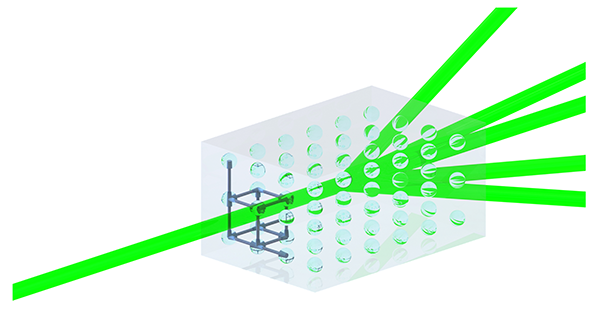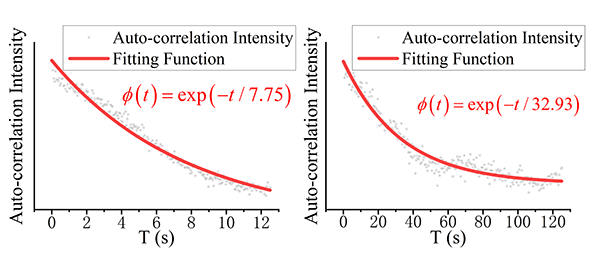Due to the multitudinous properties such as instance, ferroelectricity, dielectricity, piezoelectricity, and pyroelectricity, ferroelectric functional material has become a research hotspot among all the innovative materials since it has been discovered in the last century. And in optics field, as owning outstanding electrooptic effect, acousto-optic effect, photorefractive effect and non-linear optics, ferroelectric functional material has been applied as the key component in optical waveguide, optical switch, acousto-optic modulation device, optical information storage device for second harmonic generation, optical parametric oscillation etc. Moreover, it has been utilized in thin film memory, high capacity capacitors, tunable microwave devices, positive temperature coefficient thermistors, piezoelectric transducers, piezoelectric and pyroelectric sensors, infrared sensors and imagers, display devices, etc.
In the past half century, potassium tantalate-niobate crystal (KTN) has attracted a lot of attention in the research and application field because of its exceptional electro-optic (EO) properties and wide transparent wavelength range. Thus, it has been used in EO modulation, beam deflection, electric-controlled lens, and so on. Recent researches show that in proximity of the Curie temperature (paraelectric-ferroelectric phase transition temperature), KTN crystal will present a few kinds of fascinating critical phenomena, i.e. giant EO effect, scale-free optics and anti-diffraction beams propagating, solitons, and 3D super crystal. All the mentioned phenomena are related to paraelectric-ferroelectric relaxation phase transition and the accompanied changes of PNRs. Specifically, 3D super crystal appears in KTN sample with build-in 1D compositional oscillating seed. In this kind of KTN, as paraelectric-ferroelectric phase transition takes place, the build-in 1D order will transfer to the whole volume with the same spatial scale simultaneously. Formed 3D structure can cause an optical diffraction phenomenon similar to typical X-ray diffraction since the scale of this structure and the wavelength of the laser are numerically comparable just as the relationship between crystal lattice and X-ray.
Theory of paraelectric-ferroelectric relaxation phase transition is not certainly defined, and an important method to clarify it is to measure the relaxation time of PNRs/polarized clusters. With measured relaxation time, relaxation process can be described by a sum of relaxation functions. 3D super crystal is essentially dynamic relaxation, which can be illustrated by some kinds of relaxation functions with a main characteristic relaxation time.
The research group led by Prof. Pengfei Wu from Nankai University researched the 3D super crystal phenomenon in customized KTN crystal. Physical mechanism and characteristic relaxation time were studied and demonstrated. The relevant research results are published in Chinese Optics Letters, Vol. 18, Issue 2, 2020 (Quanxin Yang, Xin Zhang, Hongliang Liu, Xuping Wang, Yingying Ren, Shan He, Xiaojin Li and Pengfei Wu. Dynamic relaxation process of 3D super crystal structure in Cu:KTN crystal [J]. Chinese Optics Letters, 2020, 18(2): 021901), and is selected as Editors’ Pick.
For the characteristic relaxation time measurement, technique named dynamic light scattering (DLS) which has been applied in the field of particle diameter measurement or size distribution profile in suspension and polymers is employed. There are two pivotal points for DLS used in the relaxation time measurement of ferroelectric microstructure: one is the utilization of vertical and horizontal polarizers for SNR increment, and the other is the auto-correlation method for signal extraction.


Strong optical diffraction phenomenon caused by the 3D super crystal.
Research results indicate that with strong coupling and interaction of PNRs and polarized clusters, relaxation time corresponding to intrinsic relaxation process of 3D super crystal is rather longer than that of polarization clusters and PNRs, though the 3D super crystal structure is essentially formed by them. Also, glassy disorder background formed during the paraelectric-ferroelectric relaxation phase transition can further restrict the response speed and the frequency of embedded microstructures, making the relaxation process of the whole system become rather tardy.

Fitting processes of auto-correlation functions with different relaxation times.
This work provides theoretical basis for the application of 3D super crystal, which shows huge potential in functional diffraction devices. Moreover, the reported relaxation process gives us a brand-new vision on the ferroelectric relaxation mechanism.


